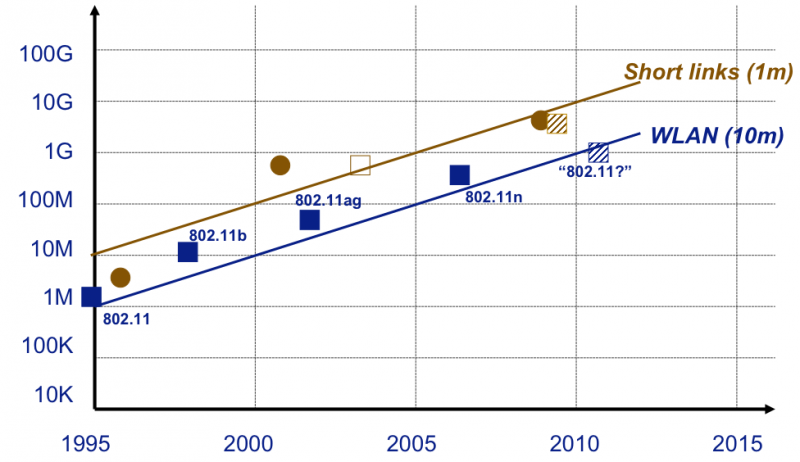D3-WLAN Systems
| Wiki for ITS | ||||||
|---|---|---|---|---|---|---|
|
Keywords: WLAN, Wifi, IEEE 802.11,
Contents
⌘ WLAN standard IEEE_802.11
The newest member in the 802.11 family are the 802.11ac and the 802.11u standards
IEEE 802.11ac
802.11ac is introduced to operate in the 5 GHz band, and has, according to the Cisco White Paper, the following features:
- More channel bonding, increased from the maximum of 40 MHz in 802.11n, and now up to 80 or even 160 MHz (for 117% or 333% speed-ups, respectively)
- Denser modulation, now using 256 quadrature amplitude modulation (QAM), up from 802.11n's 64QAM (for a 33% speed burst at shorter, yet still usable, ranges)
- More multiple input, multiple output (MIMO). Whereas 802.11n stopped at four spatial streams, 802.11ac goes all the way to eight (for another 100% speed-up).
Second-generation products should also come with a new technology, multiuser MIMO (MU-MIMO). Whereas 802.11n is like an Ethernet hub that can only transfer a single frame at a time to all its ports, MU-MIMO allows an AP to send multiple frames to multiple clients at the same time over the same frequency spectrum.
IEEE 802.11u
802.11u is a new interworking standard, and allows users to connects to access points, based on their relations to other Wifi providers. As an example: A user of "UiO" may connect to "UNIK" based on the 802.11u agreement between UiO and UNIK.
References
[Source:Cisco White Paper "801.11ac: The Fifth Generation of WiFi]
Keyword D3-WLAN Systems
| D3-WLAN Systems | |
|---|---|
| Wikipedia | http://es.wikipedia.org/wiki/IEEE_802.11 |
| Related keywords | |
| All pages containing keywords | |
(edit page)
{{{ItemText}}}
Contains pages with keyword "D3-WLAN Systems".
Related information
⌘ Earlier Presentations on WLAN systems
Susana Rodriguez de Novoa:
- Media:UNIK4700-Wlan.pdf
- Media:An_Introduction_to_wifi.pdf
- Media:radiomobile.pdf
- Media:WLANSecurity.pdf
- Book: Antennas and Propagation for Wireless Communication Systems. 2nd Edition
- Book: CCNA Wireless. Oficial Exam Certification Guide
⌘"WLAN communication" 802.11
[Presentation G. Fettweis, IEEE VTC forum Baltimore], http://www.ieeevtc.org/plenaries/vtc2007fall/28.pdf
